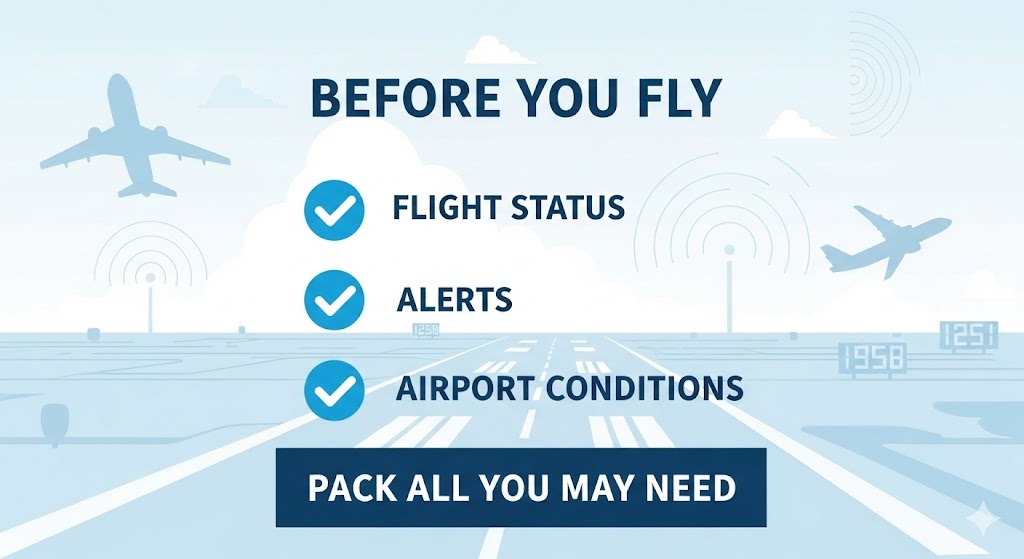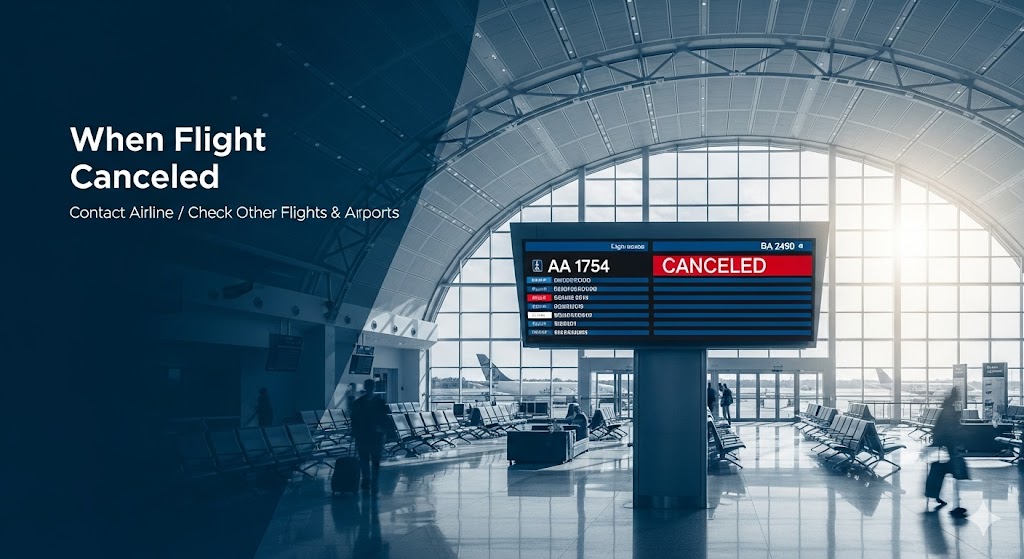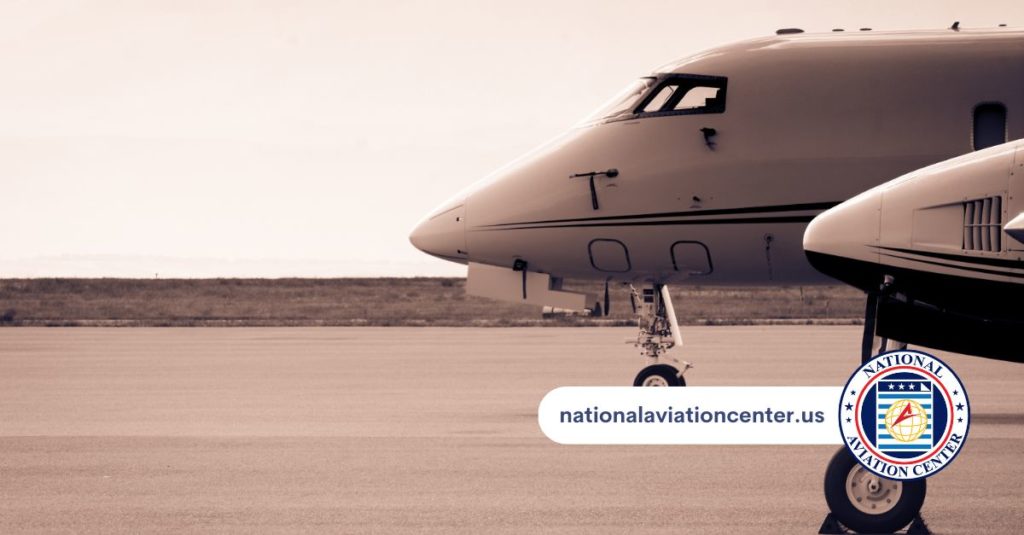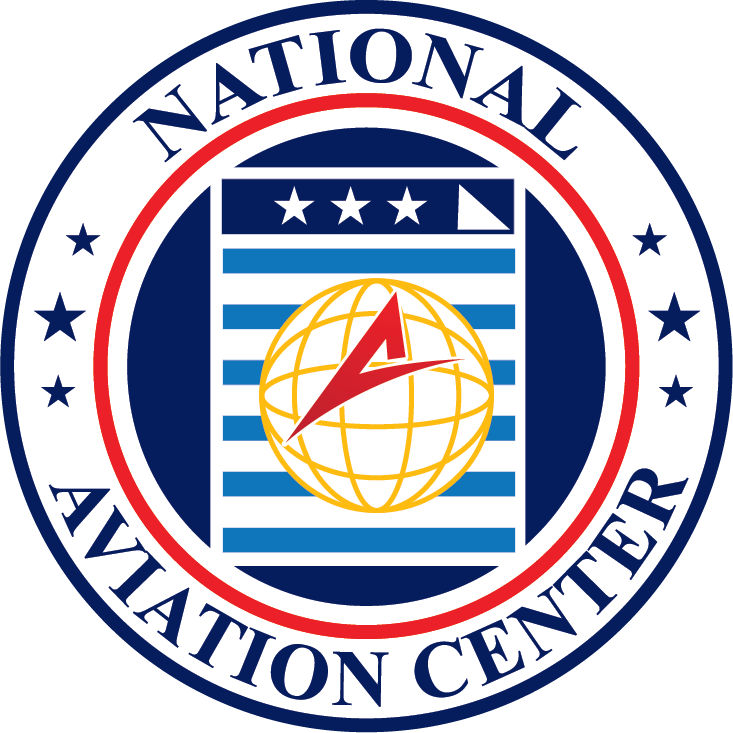Flight delays and cancellations are all too common right now. While these events are largely out of a passenger’s control, understanding the system can help you navigate the chaos. Just as passengers rely on the FAA for safe travel, owners rely on proper FAA registration documentation to legally operate their aircraft.

There’s no way to fully prepare for your flight being cut, these are some tips that may help you.
Why Are There So Many Flight Disruptions?
The government shutdown may be a reason, yes, but it may not be the only one. When the FAA issues a ground stop or delay program, it’s not a decision made lightly.
These actions are implemented to manage the flow of air traffic safely and efficiently across the National Airspace System (NAS).
Common reasons for these system-wide impacts include severe weather events, equipment outages at air traffic control facilities, security threats, or staffing shortages.
Unlike airline-specific delays caused by mechanical issues or crew scheduling, FAA mandates affect multiple carriers and airports simultaneously. This means that your options might be different than if your delay was caused by the airline itself.
Know Your Rights as a Passenger
It is important to understand that in the United States, there are few federal laws requiring airlines to compensate passengers for delays or cancellations. This is especially true when the disruption is caused by factors outside the airline’s control, such as weather or FAA mandates.
However, each airline has its own contract of carriage, which outlines its policies on how it will handle these situations. You can typically find this document on the airline’s website. It will detail what, if any, assistance they will provide, such as meal vouchers or hotel accommodations.

Proactive Steps to Take Before You Fly
The best way to handle a potential flight disruption is to be prepared before you even leave for the airport. A few strategic steps can save you significant time and stress if your flight is impacted.
- Monitor Flight Status: Start checking your flight’s status 24 hours before departure. Use the airline’s app and website, as these are often updated faster than airport display boards.
- Sign Up for Alerts: Opt-in for text and email alerts from your airline. This ensures you receive real-time information about any changes to your itinerary.
- Check Airport Conditions: Look at the FAA’s national air traffic control system status website. This can give you a broader picture of what’s happening at your departure and arrival airports.
- Pack Smart: Keep essentials like medications, chargers, and a change of clothes in your carry-on bag. If your flight is severely delayed or canceled, you may be separated from your checked luggage for an extended period.
Using Technology to Your Advantage
Modern technology offers powerful tools for travelers. Apps can show you where your inbound aircraft is coming from, giving you an early indication of a potential delay. Many travel apps also provide crowd-sourced information on airport security wait times and terminal conditions, helping you plan your journey through the airport more effectively.
If you do have all that time to sit in an airport, you can put it to use. No one wants to have to, but, that’s when you can take care of your paperwork. You could use our site, for example, to complete your FAA aircraft renewal and other forms.

What to Do When Your Flight is Delayed or Canceled
Once you receive notice of a disruption, acting quickly can make a significant difference. While other passengers are lining up at the customer service desk, you can be exploring other avenues for assistance.
- Contact the Airline Immediately: Use the airline’s mobile app or call their customer service line. Often, you can rebook yourself on a new flight directly through the app without speaking to an agent. If you do call, ask for a callback to avoid waiting on hold.
- Explore Alternate Flights: While talking to the airline, research other flight options on your own. This includes flights on the same airline and with partner airlines. If you find a viable option, you can suggest it to the agent.
- Check Other Airports: If you are flying from a city with multiple airports (like New York or Chicago), check for flights departing from a different airport. It may be worth the cost of a car service to catch a flight that will get you to your destination.
The Role of the Contract of Carriage
Remember to refer to the airline’s contract of carriage. If the airline’s policy offers compensation or assistance for your specific situation, politely but firmly request it. Keep a record of who you spoke to and when. If you incur expenses like a hotel room or meals, save your receipts.
You may be able to file for reimbursement later, depending on the circumstances. It’s also important to remain calm and courteous with airline staff, who are often managing a stressful situation with limited resources.
Navigating Aircraft Ownership and Documentation
While passengers deal with the operational side of the FAA, aircraft owners interact with the agency on a regulatory level. Proper documentation is the foundation of legal aircraft ownership and operation.
Every U.S. civil aircraft must be registered with the FAA, and keeping these records current is a non-negotiable responsibility. Forgetting to complete an aircraft change of address with the FAA after moving, for instance, can lead to missed communications and potential non-compliance.
Securing Financing for an Aircraft
You don’t want the reason you can’t fly to be your lack of proper registration.
For many, purchasing an aircraft involves securing a loan. Lenders will require a clear title before they finalize an aircraft mortgage. This financial instrument is recorded with the FAA against the aircraft’s N-Number, creating a public record of the lien.
This protects the lender’s interest in the asset. When the loan is paid off, a lien release must be filed to clear the title. We can assist in filing both the initial security agreements and the subsequent releases, ensuring your financial records are accurately maintained with the FAA.
A Clean Aircraft Title and Why It Can Be So Important
Before any purchase, conducting thorough due diligence is essential. The most critical step in this process is obtaining a complete aircraft abstract of title. This certified document from the FAA provides the entire recorded history of the aircraft, including all previous owners, recorded liens, and other encumbrances.
It is the only way to be certain that the seller has the legal right to sell the aircraft and that there are no outstanding claims that could become your problem after the sale. Our service simplifies the process of ordering this vital report, delivering the official FAA record directly to you.
Managing Ownership Transfers and More FAA Registration Documents
When an aircraft is bought or sold, the transfer of ownership must be meticulously documented with the FAA. This is a complex process that involves more than just a handshake and a bill of sale. Federal regulations, such as those found under 14 CFR 47.47, outline the specific requirements for temporary operating authority while the new registration is being processed.
Failing to follow these procedures can ground the aircraft and lead to legal complications. We provide streamlined services to help manage the entire ownership transfer process.




